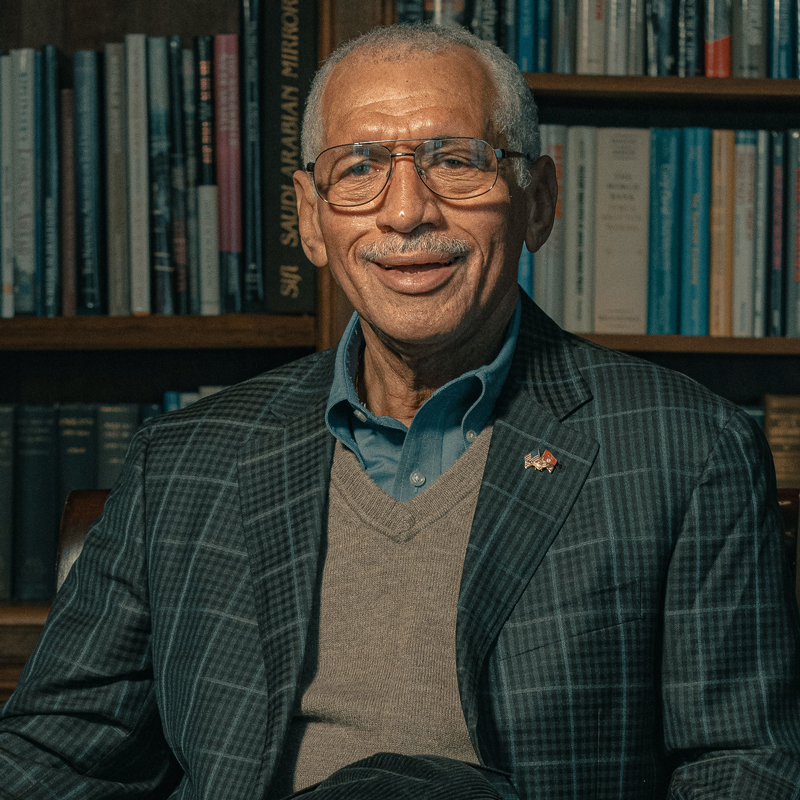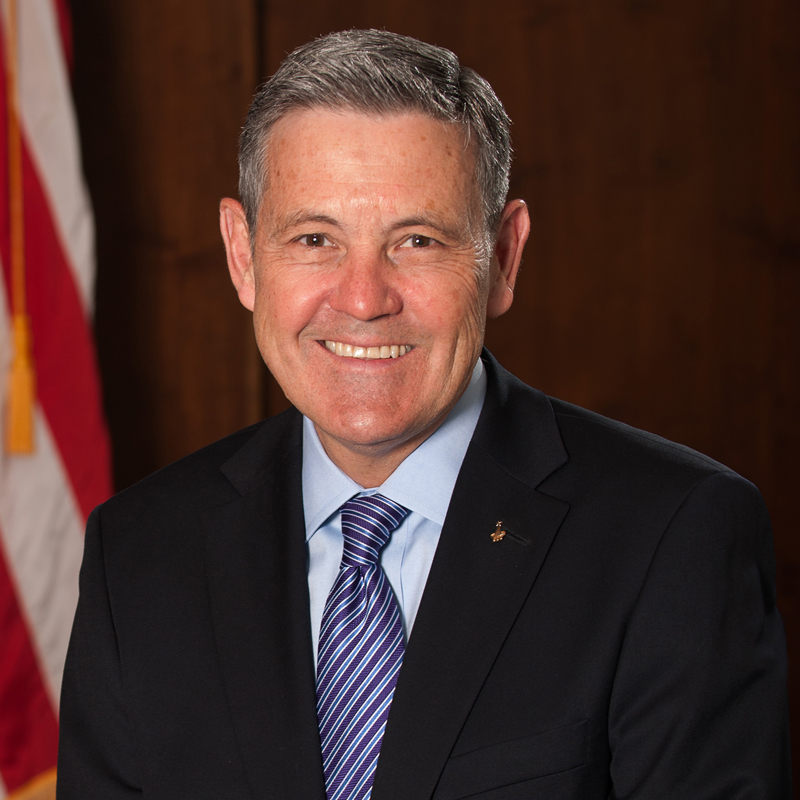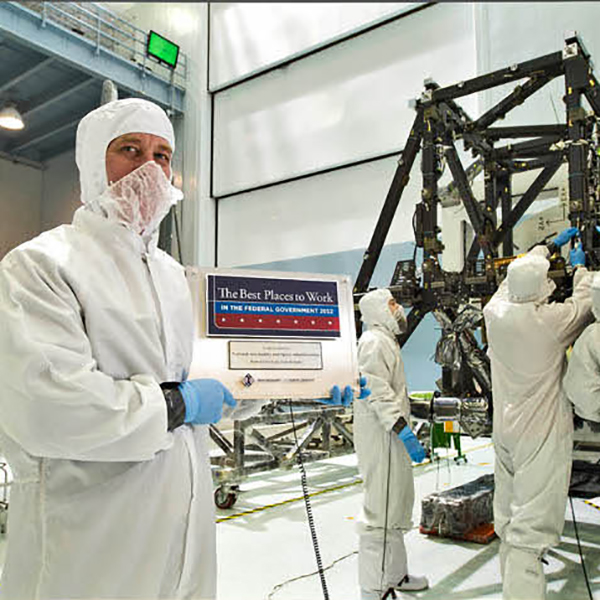Building a better workplace
How the Best Places to Work rankings helped NASA engage its employees and launch a new era of American space travel
In 2003, the Partnership for Public Service launched the Best Places to Work in the Federal Government® rankings. The rankings use data from the Federal Employee Viewpoint Survey—an idea the Partnership brought to Congress—to provide agency leaders, members of the House and Senate, and the general public with critical insights into how federal employees view their work experience. These insights help drive government performance, enabling federal leaders to address employee concerns and build engaged workforces that successfully respond to public needs. Today, the rankings are the most authoritative rating of employee engagement in the federal government. Read below to learn how NASA has used the Best Places to Work rankings to increase employee engagement and better serve the public.
Ten years ago, NASA was an agency in flux. Its flagship space shuttle program was ending, leaving employees demoralized and uncertain about the agency’s mission and the future of the renowned John F. Kennedy Space Center.
NASA turned to the Best Places to Work in the Federal Government® rankings to boost employee job satisfaction and commitment during this period of transition. Data from the rankings enabled leaders to identify and respond to employee needs and, in turn, build an engaged workforce that has driven NASA’s most recent accomplishments and pushed the agency to new heights in space exploration.
As a result of this work, NASA has sat atop the Best Places to Work large agency rankings for a remarkable nine straight years.

An organization stuck in neutral
In 2011, NASA employees sat in limbo. The agency had just ended its space shuttle program, a three-decade initiative that featured the world’s first reusable spacecraft and helped build the International Space Station. As a result, the Kennedy Space Center, which powered the shuttle program, downsized its workforce, faced budget shortfalls and looked toward an uncertain future.
“The shuttle program was a 35-year program,” said Jeri Buchholz, NASA’s chief human capital officer from 2011-2015. “People had literally worked on it since they were in college. It was just devastating to them to have that program end.”
“People didn’t want to accept that it was ending,” said Robert Cabana, NASA’s associate administrator who directed the Kennedy Space Center from 2008 to May 2021. “It was a huge challenge and morale was really down.”
As a result of these challenges, NASA dropped from third to fifth in the Best Places to Work large agency category between 2009 and 2010. They remained in fifth in 2011 and decreased in every workplace category that year – from effective leadership and employee skills-mission match to work-life balance and training and development. Most notably, the agency scored lowest in the Effective Leadership: Empowerment subcategory, which measures the extent to which staff believe they have a say in the decisions that affect their work.

Soaring to new heights with Best Places to Work data
Alarmed by this decline in employee morale, NASA leaders turned to Best Places to Work to help them revitalize and reinvigorate their workforce.
Charles Bolden, NASA’s administrator from 2009-2017, admitted that he did not pay much attention to the data until Buchholz explained its potential value to him. She had previously helped make the Nuclear Regulatory Commission the top-ranked midsize agency in the rankings as an associate director for human resources and, as a result, knew firsthand how the data could help federal leaders improve their employee engagement.
She recalled combing through NASA’s older Best Places data and picking out questions and topics that lined up with the general issues she wanted NASA to tackle. Bolden was immediately sold.
“Once she did that and I understood it, then I really began to promote it … and let [supervisors and leaders know] that we wanted to do the best we could do and become the best leadership team we could,” he said.
With guidance from Buchholz, Bolden started to use Best Places to Work data to inform his leadership style and address employees’ growing disconnect from NASA’s mission. He made it a point to always tell staff that the work they did was important and launched an “Ask Me Anything” virtual program that enabled thousands of employees to speak with him directly.
These changes fostered a culture of transparency and accountability across the agency, and helped employees recreate the sense of community that had eroded with the end of the shuttle program.
“Those very simple things really started helping people feel connected to each other and to the mission,” Buchholz said.
“Any time [Best Places data] talked about the agency and agency leadership,” Bolden added. “I took it personally. I had to clean my own leadership style up before I could talk to anybody else about getting themselves in order.”
Buchholz also used Best Places data to create a workplace that rewarded innovation. After analyzing data that showed employees often avoided risk out of fear that failure would cause catastrophic disaster or hurt the agency’s budget, she initiated the “Lean Forward, Fail Smart Awards.”
The program allowed NASA employees to nominate each other for scientific advances or accomplishments that emerged from failed attempts at innovation. The nominations—submitted in the form of one-minute videos—were posted online for an agencywide vote. Winners received formal feedback on their work from NASA leadership.
Buchholz credited the awards show with making failure less of a taboo subject at NASA—a critical development that has helped agency leaders build a culture of innovation that continues to enable new advances in space travel.
When she heard one NASA leader argue at a meeting that the agency had to accept more risk and “push to the point of failure,” she knew things had changed.
“That was a different conversation than we were having two years ago,” Buchholz said. “You know that you have operationalized something when you hear your own words come back to you.”

“Any time [Best Places data] talked about the agency and agency leadership, I took it personally. I had to clean my own leadership style up before I could talk to anybody else about getting themselves in order.”
Space Center
Nowhere has this spirit of innovation—and its underlying employee engagement—paid off more than at the Kennedy Space Center.
Facing a future without the shuttle program, Robert Cabana, the space center’s former director, led the charge to turn the facility into a multiuser site that would allow private companies like Boeing and SpaceX to use the physical space and technology that had once supported the flagship initiative. These transformative efforts earned Cabana a 2019 Service to America Medals award.
NASA employees and other federal stakeholders were initially skeptical of this shift, uncertain that government should open its historic space program to commercial companies and that a sustained collaboration with the private sector would work.
Cabana relied on employee engagement to increase leadership buy-in. Bolden noted that he “spent a lot of time team building, making sure he empowered [leaders] to make decisions and then backed them up” when they pitched the plan both internally and externally.
“You’re not going to be as successful unless you get the team to buy in to [the vision], own it and help initiate that change,” he said.
Cabana said that Best Places data helped him during the transition to successfully develop stronger, more responsive leaders at every level of the organization. One program, Leadership for the Future, targeted midlevel and senior leaders at the center who both implemented projects and supervised employees.
“We looked at areas for improvement and what we needed to do to get better and raise the lower scores,” he said.
As a result, the space center’s overall engagement score jumped up more than 15 points between 2009, Cabana’s first full year as director, and 2019. That year, the center had the highest score of any NASA center measured by Best Places to Work and ranked eighth out of 420 subcomponents included in the rankings.
These engagement efforts have enabled the center to reemerge as a preeminent site for government and commercial space exploration. It maintains a robust flight schedule—which has aided U.S. manufacturing and pumped jobs back into the American economy—and is currently preparing to launch the world’s most powerful rocket as part of the Artemis program. That program plans to land astronauts on the moon by 2024 and lay the groundwork for future human missions to Mars.
“Employee engagement has been a driving force in the space center’s ability to build a productive and innovative workforce that continues to break new boundaries in space exploration,” Cabana said.
Bolden also sees better employee engagement at the heart of this renewal. “It’s a direct correlation,” he said. “If organizations have high morale, they’re usually going to do pretty well.”

“We looked at areas for improvement and what we needed to do to get better and raise the lower scores.”
Skyrocketing scores, and recruiting and recognizing talent
NASA landed atop the Best Places to Work large agency rankings in 2012, just a year after Buchholz and Bolden began analyzing their employee engagement data in earnest. The agency’s score increased each of the next eight years and, by 2019, had grown nearly 10 points.
During that time, the “innovation,” “effective leadership,” and “training and development” subcategories—all pinpointed by NASA leadership as areas of focus—increased 7.8, 5.6 and 9.0 points respectively. In the leadership subgroup, “empowerment,” which dropped the most from 2010-2011, saw an increase of 8.6 points.
In 2019, these trends helped raise the agency’s Best Places to Work score to 81.5. That year, NASA was the only large agency to outperform the private sector’s overall employee engagement score of 77.0, according to data from Mercer.
By recognizing NASA’s strong employee experience, Best Places to Work has provided the agency with a platform to increase employee morale and recruit new talent at a time when many professionals from mission-critical fields continue to flock to the private sector.
NASA leaders also use the Best Places to Work rankings to show employees how they contribute to the agency’s mission.
When Buchholz was at NASA, she created foam plaques commemorating the agency’s Best Places to Work victory. Employees were encouraged to take pictures of themselves with the plaques while working—one was even taken at the International Space Station—for internal and external promotion. The images showed that NASA employees—not only senior leadership—had made the agency a “best place to work.”
“People would start to wonder, ‘What did we do to get that? They recognized that we had a workplace that anybody else would want to be in,” Bolden said.
“People would start to wonder, ‘What did we do to get that?’ They recognized that we had a workplace that anybody else would want to be in.”
Dispelling myths about government work
In addition to increasing employee morale and leading to better mission outcomes, this recognition has also enabled NASA to dispel harmful myths about the federal workforce.
In 2015, Rep. Mark Meadows (R-NC) held a “Worst Places to Work in the Federal Government” hearing to push the argument that political appointees should have more leeway to fire career civil servants. To show that public servants did valuable, if often unheralded work, Partnership President and CEO Max Stier arranged for Meadows to visit agencies with high Best Places to Work scores, including NASA.
Impressed, he later delivered an in-person apology to federal workers at the Partnership’s annual event recognizing the Best Places to Work in the Federal Government, saying that they had too often been “blamed for the inefficiencies” of government. Then, at a hearing the following year, he rattled off several high Best Places to Work scores to recognize agency success stories and bat down the myth of the ineffective, listless federal employee.
This was no small shift. In an era of growing polarization over the size of the federal government—and amid political turnover atop the agency as a result of the 2016 election—NASA has built a workplace that continues to bring out the best in its employees.
From 2016-2019, the agency raised its score roughly 3.5 points and saw the largest increase—of 5.5 points—in the “strategic management” subcategory, which measures the extent to which employees believe management will help them develop the skills to succeed and achieve the agency’s mission.
The “effective leadership” subcategory also increased 3.4 points, with employees view of their senior leaders—some of whom were appointees of the new administration—rising 3.6 points. That these scores have continued to grow despite political turnover shows that NASA has built a sustained culture of employee engagement across the agency.
Best Places to Work helped make this possible.
“If you look at the structure of NASA, we have people who care about the work and we have leaders who care about their people,” said Robert Gibbs, NASA’s associate administrator for the Mission Support Directorate. “That’s the cultural fabric of NASA that’s woven into pretty much everything we do.”
Continue reading for Best Places to Work resources and other employee engagement news.
